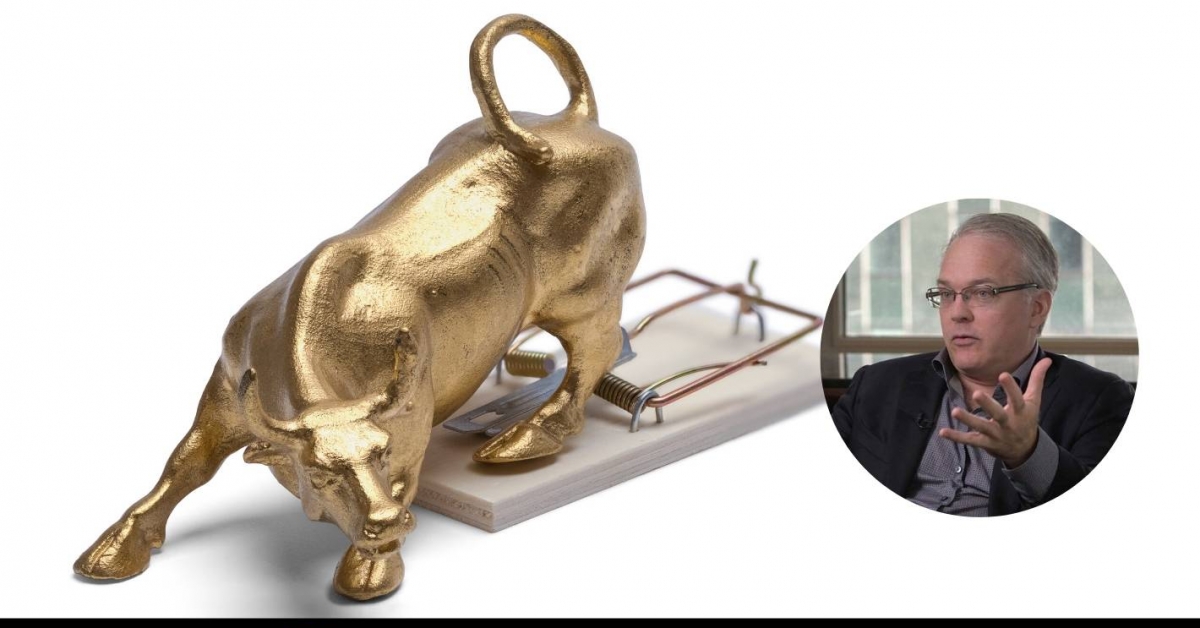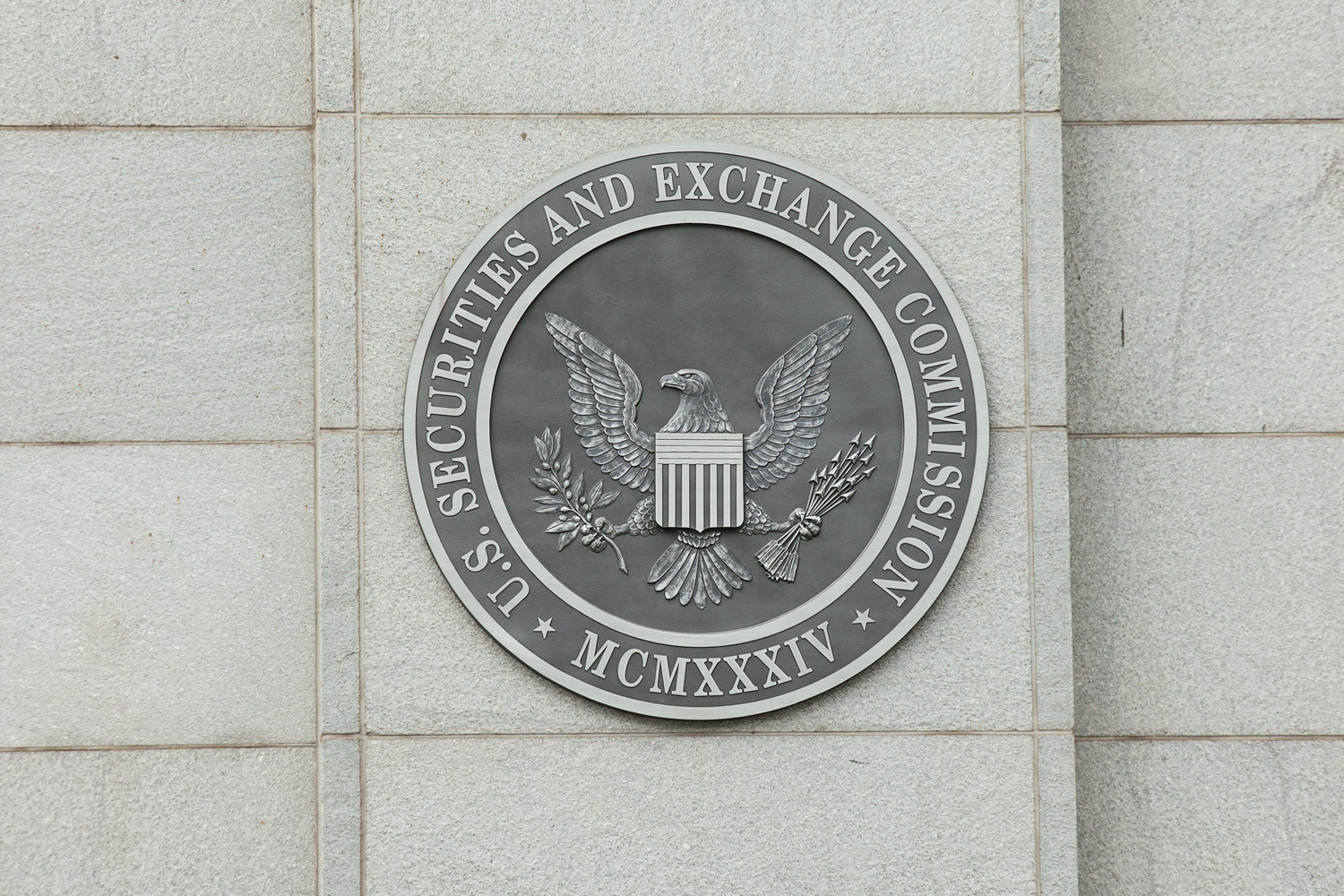First Mover: Bitcoin Rally Sends Message to Capitalists as Despair on Wall Street Grows
(Credit: Shutterstock/mezzotint)
First Mover: Bitcoin Rally Sends Message to Capitalists as Despair on Wall Street Grows
Bitcoin’s rally last week, as the Standard & Poor’s 500 Index of U.S. stocks floundered, served to underscore just how different the conversations are right now in digital-asset markets and traditional finance.
As high-profile investors including Stanley Druckenmiller and David Tepper were warning of looming bankruptcies, overvalued stocks and the increasingly distant chances of a rapid economic recovery, bitcoiners celebrated the cryptocurrency’s third halving and held spirited discussions on the future of money during a virtual New York Blockchain Week.
You’re reading First Mover, CoinDesk’s daily markets newsletter. Assembled by the CoinDesk Markets Team, First Mover starts your day with the most up-to-date sentiment around crypto markets, which of course never close, putting in context every wild swing in bitcoin and more. We follow the money so you don’t have to. You can subscribe here.
Bitcoin trading volumes are averaging their highest levels since last July, according to Arcane Research, while the number of open bitcoin futures contracts on the CME exchange is rocketing and big hedge-fund managers like Paul Tudor Jones are reportedly nosing into the market.
Such enthusiasm contrasts markedly with the dour outlook of Federal Reserve Chair Jerome Powell, who noted last week in a televised interview that the decline in economic activity and U.S. employment was so “severe” that the total increase in jobs over the past decade has now been wiped out.
For bitcoiners, the pessimism on the economy was just another reason to be bullish, since it means the Fed is likely to inject more money into the markets, strengthening the case for buying the cryptocurrency as an inflation hedge. The Federal Reserve’s total assets, which stood at $4.2 trillion at the start of the year, have now surged to almost $7 trillion.
Bitcoin, the largest cryptocurrency, is up a staggering 38% year-to-date, compared with an 11% decline for the S&P. On Sunday bitcoin rose for the sixth day in seven to $9,891, just shy of the psychological threshold of $10,000.
“Bitcoin has been performing well, while the stock market has struggled,” Arcane Research, a cryptocurrency analysis firm, wrote Friday in a report. “If this trend continues, it could also be strengthened by people finally believing the narrative and then becoming a self-fulfilling prophecy.”

Many traditional investors discount cryptocurrencies, but at the moment, capital markets, at least in theory, are signaling that the blockchain and digital-asset industries are deserving of more investment.
Bank stocks got hit hard last week as investors fretted over the prospect of shrinking lending margins and swelling loan losses. The Fed, which oversees the biggest U.S. banks, relaxed a key regulatory ratio that could make it easier for the financial institutions to buy more Treasury bonds, which the government is selling in bundles to help finance the fast-expanding $25 trillion national debt.
In a report late Friday, the Fed warned that “asset prices remain vulnerable to significant declines,” with trouble spots appearing in commercial real estate, corporate bonds, leveraged loans and collateralized loan obligations.
A Commerce Department report last week showed that U.S. retail sales plunged 16% in April, a record, and the 118-year-old department-store owner J.C. Penney filed for bankruptcy protection. Some 36 million U.S. workers have filed unemployment claims in the past eight weeks, according to CNBC.
“Another week, and more records shattered, and not the good kind,” Scott Anderson, chief economist for Bank of the West, a unit of France’s BNP Paribas, wrote Friday in a report.
Even the White House’s top economic advisor, Larry Kudlow, told Fox Business Network that the economy was “still in freefall.” President Donald Trump tweeted that the Fed should cut benchmark interest rates to negative levels for the first time in history.
Indeed, some of the few glimpses of optimism to emerge last week came when Wall Street captains were speaking about digital money.
Visa CEO Al Kelly, appearing at the giant U.S. bank JPMorgan’s annual tech conference, said that digital currencies could be “additive to the payments ecosystem as opposed to being any kind of replacement or negative.” Citigroup CEO Mike Corbat said that more banking activities are suddenly going digital, including putting letters of credit on blockchains.
Former Citigroup CEO Vikram Pandit, who led the big U.S. bank through its $45 billion bailout during the 2008-2009 financial crisis, lamented in the New York Times’ Dealbook blog that sending coronavirus-relief payments via digital wallets was a “great idea that could not be executed because we lack the necessary plumbing.”
Brian Brooks, chief operating officer of the U.S. Office of the Comptroller of the Currency, another bank regulator, told CoinDesk’s Consensus: Distributed virtual conference on May 11 that it might make sense to allow crypto companies to be licensed as financial institutions on a national, rather than state-by-state level.
The very next day, the Wall Street Journal reported that JPMorgan had taken on the big cryptocurrency exchanges Coinbase and Gemini as customers.
Kraken, another big cryptocurrency exchange, tweeted on May 14 that it had hired 100 people in the past three weeks.
During a panel discussion last week hosted by the digital-asset exchange Huobi as part of CoinDesk’s virtual conference, investor Kyle Samani of Multicoin Capital said there’s a 5-10% chance that the combined market capitalization of all cryptocurrencies surges above $1 trillion later this year, from about $270 billion currently.
Blockchain.com noted in a monthly outlook on May 8 that bitcoin’s halving provided an opportunity to mark how much the digital-asset industry had grown over the past four years. The halving disappointed some investors with its anemic price action, but bitcoin rallied in the days afterward.
“In 2020 we have a much broader array of market participants, larger market players, more established exchanges, and a far more developed derivatives market,” according to the report.
The analysts added: “Amidst this environment, more and more evidence indicates that institutional and retail investors are looking to both gold and bitcoin as an alternative to buying stocks at present valuations.”
Whether a self-fulfilling prophecy or just capitalism at work, it’s the signal that markets currently are sending.
Tweet of the day

Bitcoin watch

BTC: Price: $9,642 (BPI) | 24-Hr High: $9,933 | 24-Hr Low: $9,497
Trend: Bitcoin’s struggle for a convincing move above $10,000 continues despite a major breakout on technical charts.
The cryptocurrency is currently trading near $9,620, having faced rejection near $9,970 earlier on Monday, according to CoinDesk’s Bitcoin Price Index. Upward momentum has run out of steam near $10,000 three times in the last four days.
The latest retreat from near $10,000 comes on the heels of a bullish weekly close (Sunday, UTC). Bitcoin jumped 10% last week and ended above the resistance of the trendline connecting the June 2019 and February 2020 highs.
The breakout is also backed by an above-50 or bullish reading on the 14-week relative strength index and higher bars on the MACD histogram, a sign of strengthening upward momentum.
So far, however, a move into five figures has remained elusive. The weekly chart breakout would lose its shine if prices drop below $9,589, invalidating the bullish higher-lows setup on the hourly chart. That would open the doors for a fall back to $9,000. The former resistance-turned-support of the descending trendline is now located at $9,070.
Buy volumes (green bars) consistently remained low as prices rose from $8,200 to $9,900 in the five days to May 14. A low -volume price rise is often short-lived. Hence, a possibility of a drop below support at $9,589 cannot be ruled out.
On the higher side, a move above the high of $10,070 seen in the first week of May is needed to restore the bullish trend, as noted on Friday.

Disclosure Read More
The leader in blockchain news, CoinDesk is a media outlet that strives for the highest journalistic standards and abides by a strict set of editorial policies. CoinDesk is an independent operating subsidiary of Digital Currency Group, which invests in cryptocurrencies and blockchain startups.









